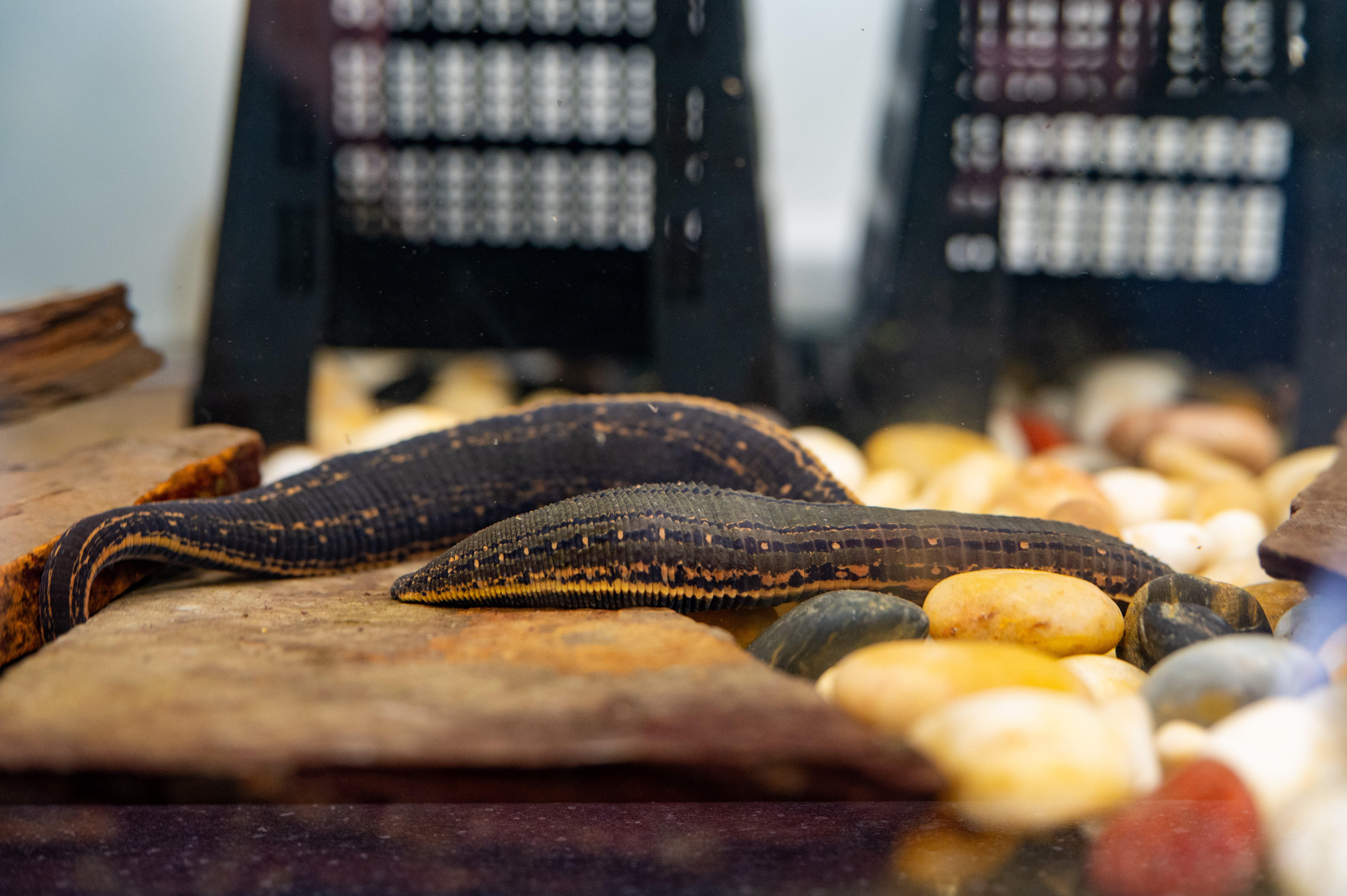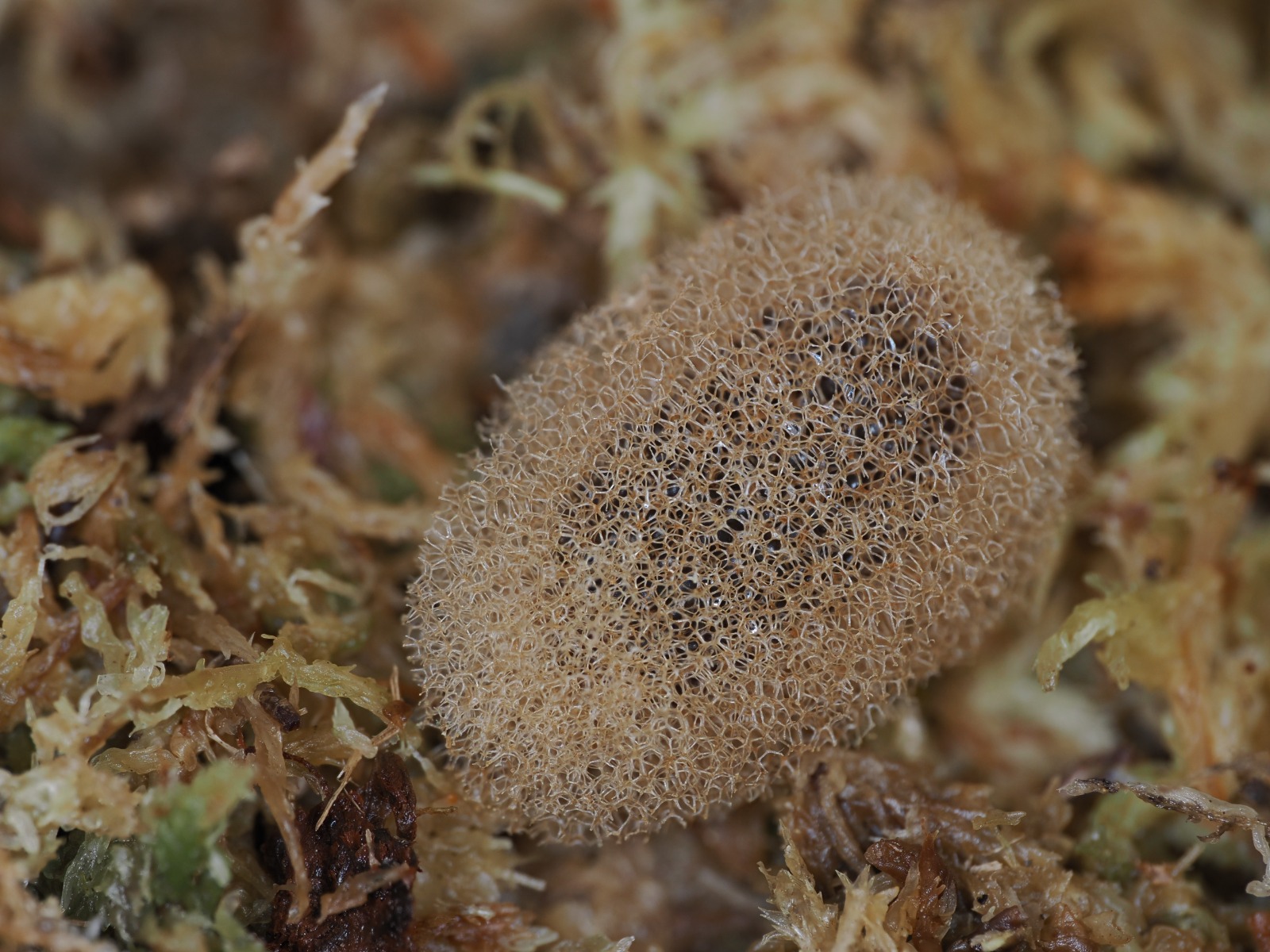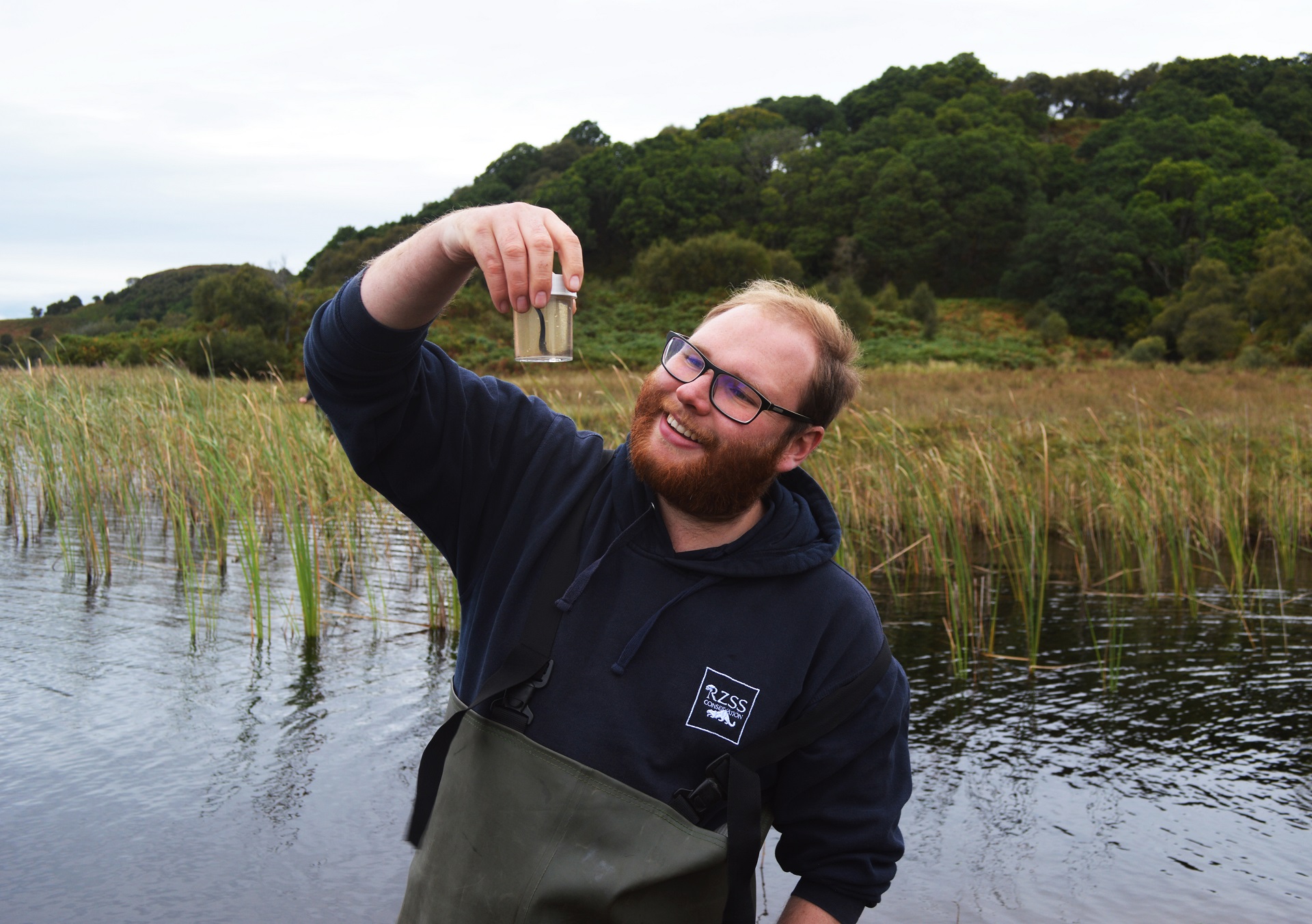The weird and wonderful world of medicinal leeches
Posted 23 Apr 2025 in Highland Wildlife Park

Let’s talk about medicinal leeches. At the Royal Zoological Society of Scotland (RZSS), we’re huge supporters of them, but even we have to admit they have a wee bit of an image problem. If they’re not lurking in horror movies as creepy river-dwellers, they’re remembered for their grisly role in historical medicine, where they were used for centuries to ‘balance the humours’ before modern science took the reins.
Despite their reputation, medicinal leeches are far more than just blood-hungry villains. They are skilled survivors and important contributors to their ecosystems. Unfortunately, myths and misunderstandings have given them an unfairly bad name.
To combat these misconceptions and highlight just how interesting these critters really are, we’re keen to set the record straight. Let’s take a closer look at some of the most common myths about medicinal leeches - and why they deserve more appreciation.

They make egg cocoons out of slime, but we don’t really know how
Leeches have a fascinating method of laying their eggs. They create a unique foam-like structure out of slime, which serves as a protective enclosure for their eggs.
The leech moves in and out of the foam as it forms, and after a period, the foam dissolves, leaving behind a hardened cocoon that houses the young. The exact process of this cocoon formation remains a mystery.
They are hermaphrodites with genitals near their heads
Medicinal leeches are hermaphrodites, possessing both male and female reproductive organs. But they are not asexual and cannot self-fertilise, meaning that reproduction still requires two individuals. Their two sets of reproductive organs are located near their head.
They have five pairs of eyes, three jaws and 100 teeth
Despite their seemingly simple worm-like appearance, medicinal leeches have a complex anatomy. They boast 100 tiny teeth across three jaws, which they use to create a precise incision when feeding. Though the idea of a leech bite may sound unpleasant, their saliva contains anticoagulants and mild anaesthetics, making their feeding process painless.
While they may not have the expressive faces, leeches do have five pairs of eyes. These eyes help them detect light and movement, allowing them to respond to environmental changes with speed.
They have 34 brains and can turn their rears into paddles
A medicinal leech’s body is divided into 34 segments and each one of which has its own mini brain. All these mini brains work together, because there is no centralised nervous system like humans have with our one brain and spine.
This segmented body is highly flexible, meaning they can manipulate their shape with remarkable precision. One minute they appear short and stout, the next they stretch out and flatten themselves into a wave-like form for swimming. When moving through water, they turn their rear end into a paddle which helps their agility.

They have an exceptional taste in water
Medicinal leeches need clean, fresh water to survive. They are usually found in unpolluted lochs, ponds, marshes and slow-moving streams. Any pollution can be harmful to leeches as they breathe through their skin. If the water contains chemicals like pesticides or waste from factories, it can lower oxygen levels and make the environment toxic for them.
Because of this sensitivity, their presence in a habitat is often a sign that the water is clean and healthy. If you come across a leech in the wild, you should celebrate because you’re most likely in an area with exceptional water quality - it’s like a stamp of approval from nature itself!
Their name is stamped into Scottish geography
Due to overharvesting, pollution and incomplete historical records, it’s not always easy to determine where medicinal leeches once thrived in the wild. However, place names can offer valuable clues. In Scotland, several lochs have names that reference leeches in Gaelic, hinting at their past presence. One such example is Loch nan Digl on Islay, a small pond whose name translates to ‘little loch of the leeches’.
Nature’s little enigma
Medicinal leeches may not be the most glamorous creatures in Scotland’s waters, but they are among the most intriguing. From their multi-brained bodies to their curious method of reproduction, they challenge our understanding of biology and adaptation. Whether they are skimming the banks of a loch or quietly creating their mysterious slime cocoons, these ancient invertebrates remind us that nature is full of surprises
About our conservation efforts
Like so much of our struggling biodiversity, medicinal leeches are in trouble. Once heavily harvested for medical use, their populations plummeted. Despite no longer being used in mainstream medicine, they’ve failed to recover. Habitat loss and freshwater pollution have pushed them to the brink, leaving them clinging on in just three locations in Scotland. Globally, they are now classed as Near Threatened by the IUCN.
To help turn things around, RZSS launched a conservation breeding programme in 2023 at a specially designed facility at Highland Wildlife Park. Working in partnership with Buglife as part of the Species on the Edge Initiative, the aim is to breed enough leeches to establish new populations in suitable lochs across the country.

